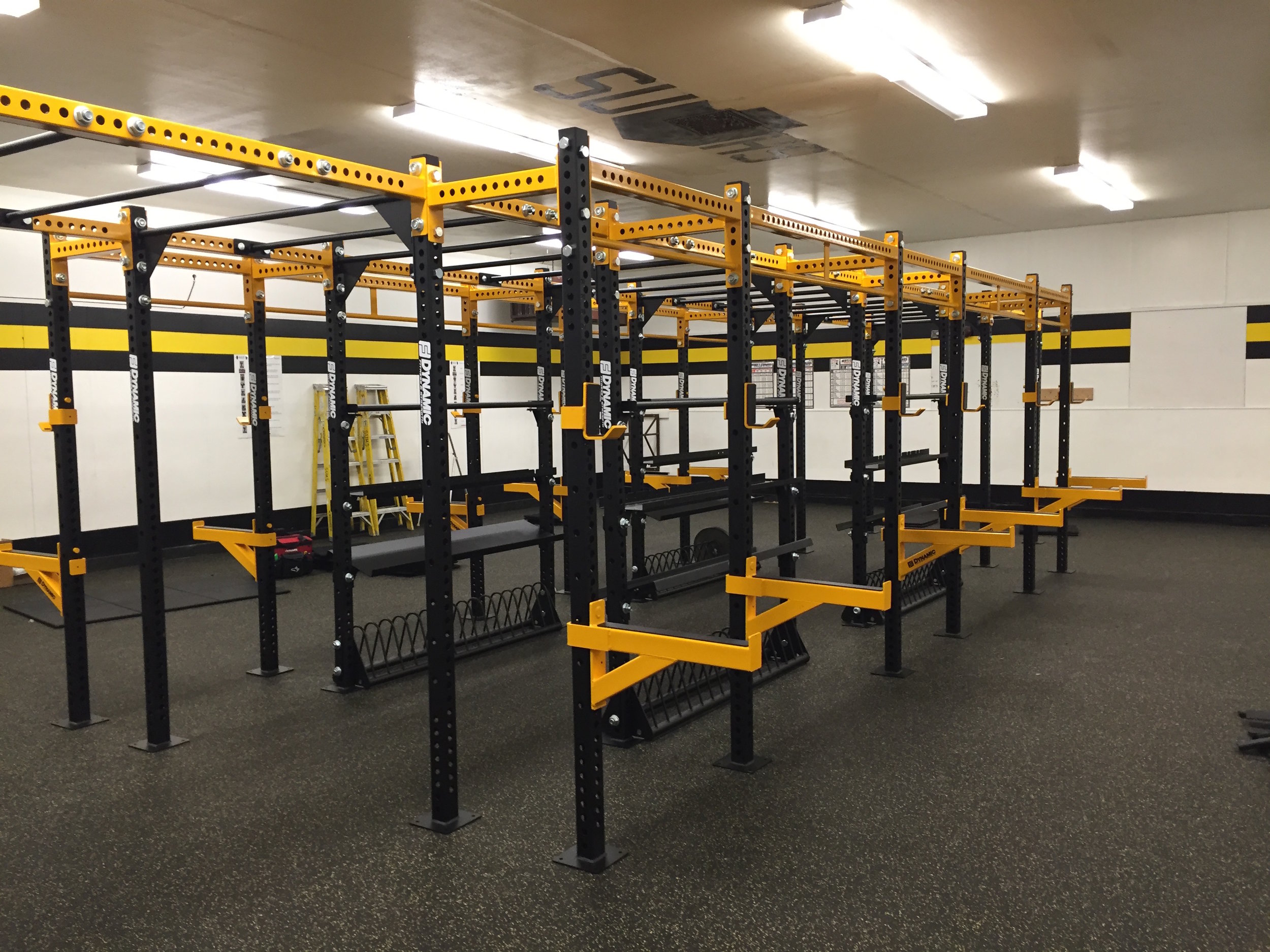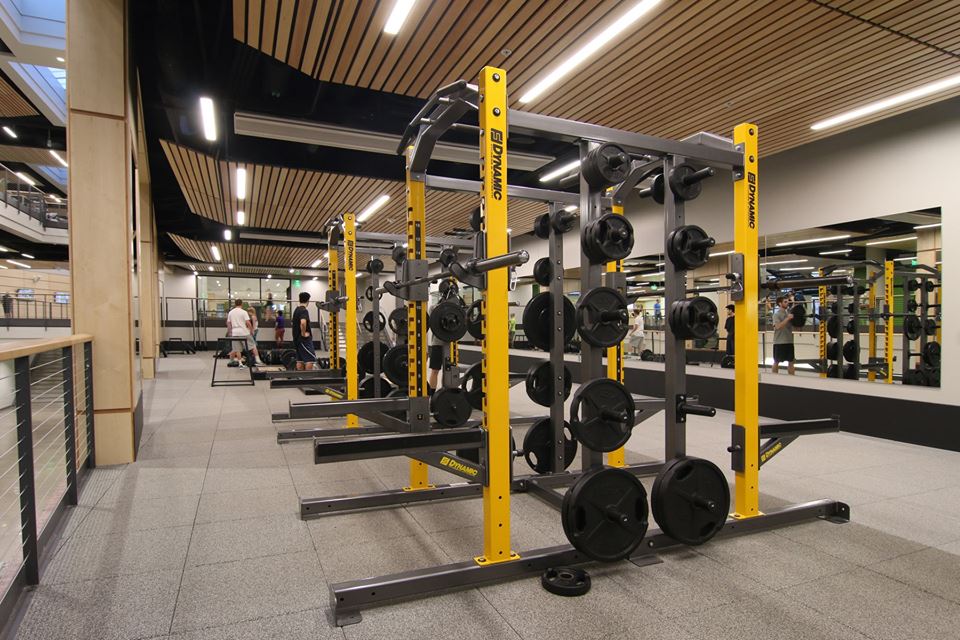EDUCATION: RIGS VS RACKS
This post is all about the differences, benefits, and limitations of rigs and racks.
RIGS VS RACKS
Fitness trends are changing. Have you noticed how much functional fitness has grown in popularity over the last 10 years? This, and the tendency towards training general population students like athletes, have changed the needs of a school weight room. Since most schools don’t have an opportunity to do a major update on their weight room more often than every 10-15 years, it’s important to make the right decision... You’ll be living with it for quite a while. This post is all about educating you on the differences, benefits, and limitations of rigs and racks.
What is a rig?
Rigs are so versatile they are difficult to define. For the purpose of our discussion today we will define a rig as a versatile frame with the ability to reconfigure your “stations” to your needs of the day. It can be anywhere from 4’ all the way 24’ and beyond. It can be just about any shape you want with almost any type of station you want. We will assume you would be wanting your rig with as many lifting stations as possible.
Here are some examples of rigs:
What is a rack?
We’re talking half racks, power racks, and ¾ racks. They can be “doubled” back to back, they can be annexed with storage and there are even a few accessories that can be added. Often you can expect to get not only a lifting station but also a pull-up station.
Pros of Rigs
Rigs are a great solution to getting the maximum amount of users in a tight space while providing a way to transition to other modalities. What does that really mean? Versatility. You could have a tiny 4’ wall-mounted rig, you could have a 24’ self-standing rig in the middle of your space or anything in between.
This means that you can tailor your rig to your training style and the number of students you want to train simultaneously. One option we love is a 6’ by 24’ rig. A setup like that means that you can have 6 lifting stations that you can monitor by walking down the center of the rig.
When you’re not doing lifts you have an unending amount of stations you can set-up such as dips, glute/ham, pull-ups, TRX, ball targets, battle ropes, etc. Maybe you even want to have turf down the center so that your students can be pulling a sled in the protected space in the center of the rig while other stations on both sides of the rig are being utilized.
All of this versatility adds up to space-saving. Training more students in the same amount of space.
Another benefit of rigs is they tend to be budget-friendly. For example, it is about 30% less to get a rig with 6 lifting stations than 6 free-standing half racks.
Cons of Rigs
While rigs can be configured to fit the needs of powerlifting and/or sports specific training they tend to put athletes closer together and not provide as much privacy as a power rack can. This makes monitoring even more important.
Rigs tend to be really basic in style, you could even describe them as raw. This may or may not fit with your vision for the room. The style and “feel” of the room need to be considered.
Another difficulty with rigs is that they need to be bolted to the ground. This requires certain conditions and sometimes it’s just not possible to do that. Rigs also tend to be tall and require a taller ceiling height. Plate storage can also be less functional and more cumbersome depending on the setup you select.
And then there’s the issue of space. Rigs are hugely space-saving but if you really have only a very small amount of space to work with, you may not be able to get a rig in that really adds to the value of your space.
Pros of Racks
Racks have been the go-to item for weight rooms for years. Power racks and half racks are fairly specific to the needs of the coach and the athletes performing the exercise.
If you’re doing Olympic lifts they are the gold standard. They provide adequate space to provide lifters with a safe, controllable environment. Collegiate athletics are going to lean towards a rack because they are more accommodating with power-lifting, better for moving a lot of heavy weight, and for linear strength programming. Plate storage is easy to access and efficient.
Plus a robust rack is going to look strong, it’s going to create a substantial feel in your weight room.
Cons of Racks
The biggest con on racks is that they are just not as versatile as a rig. You have a very limited movement plane to work with. When using a rack you know the lifts you can do and there’s not much of an opportunity to go outside of that.
They are not going to give you the same access to versatile dynamic/functional movements as a rig. The accessories and attachments that you can use on a rack are very limited. When putting multiple racks in a room you have the potential for a lot of “dead space” that would be utilized if it were a rig.
What should I use?
By now you might know exactly which option you lean towards. We feel these factors are the big 3:
Training Style: Are you performing just Olympic movements or are you wanting to provide more functional training like suspension training and room for dynamic movements?
Amount of students you want to train: Are you working with a small group(or with multiple coaches) that you can monitor easily or do you need to be able to monitor more students in the program simultaneously?
Budget: Do you have space and dollars to spread out or do you need to keep it really efficient?
Honestly, there are even more factors to consider than what we have mentioned in this article. For instance, when you add in the right flooring you can have the equivalent of lifting platforms in every square inch of your space. Is that beneficial for your space? That is exactly why we don’t believe in a one-size-fits-all approach to fitness room design.
We’d like to get to know your training style, your team, and your space so that we can help you to consider all the factors and assist you in building a facility for your students and athletes that will serve your needs for years to come. Get started on your project here.








